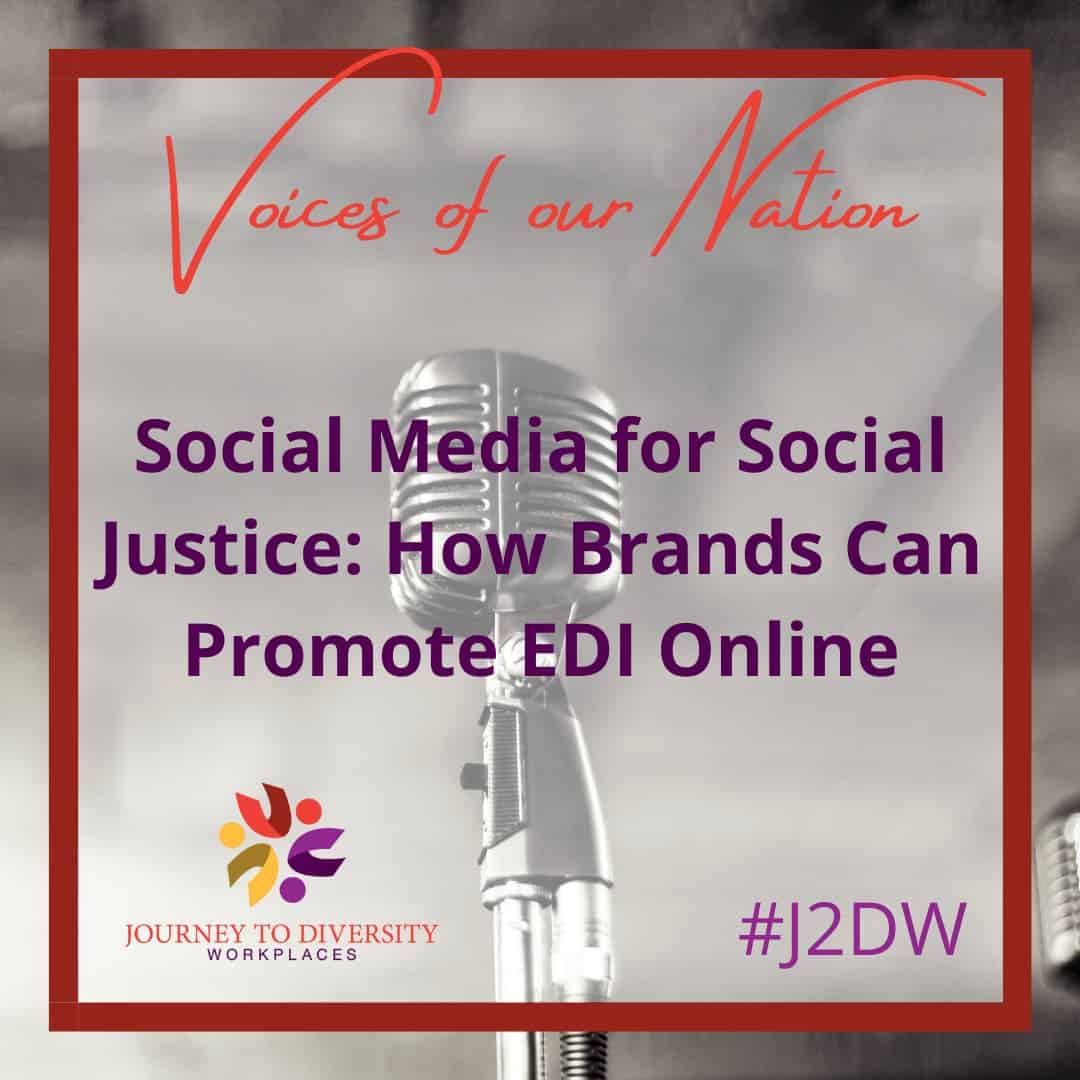As we have progressed in society, the concept of technology has begun to branch away from just a luxury that the wealthy can afford and head towards a common, everyday tool. With phones no longer being simply used for their calling feature, what it means to communicate has transformed into something more interactive, seemingly social, yet unnaturally distant all the same. Social media has become a strong force as a platform for creating and sharing content that promotes expression, facilitates communication, shares knowledge and experiences, and can bring people together just as easily as it can tear them apart.
As companies, it is necessary to scour the internet and garner an understanding of not only social media trends but also understand the importance of media sensitivity and social awareness when creating an online presence. With this in mind, how can one practice equity, diversity, and inclusion (EDI) through social media platforms without seeming performative? How can EDI actually be promoted through social media? Below, I outline a few stepping stones in articulating EDI on social media as a brand and establishing an open, accommodating, and inclusive brand in association with your company.
-
- Accessibility in advocacy: Social media is evolving to become more accessible for individuals with hearing or visual disabilities and audiosensory issues. However, a significant amount of that responsibility lies on your shoulders as well when you create an internet presence for brands, share posts, and engage in conversations over social media. This can include adding captions to videos and text captions to posts as useful image descriptions (alternative text), using inclusive language, mentioning trigger warnings if needed, and using camelcase for hashtags, where the first letter of each word in the hashtag is capitalized so automated screen readers, and individuals with reading disabilities can easily differentiate the words.
- Socially conscious: Staying up to date with current events is not a necessity for brands on social media to thrive. But, when a brand is able to understand and recognize social issues and respond in a well-timed manner to illustrate to its audience that its brand is a safe space for all people, it increases its brand value and loyalty.
- Company collaborations + interactions: Being on social media means chasing after engagement on posts and stories and hopefully capturing the attention of other brands and companies that may want to collaborate. When doing so, collaborating with companies that work for diverse causes and support different communities, can be a way to demonstrate not only your company’s stance on these topics but also provides an avenue for them to find a greater audience for their cause.
- Amplify voices: When you have an established online presence, it is important to use your platform to amplify the voices of underrepresented communities. Being an ally does not give one the right to speak over the communities being represented. Oftentimes, brands confuse this with speaking for these communities and even over their voices instead of passing over the megaphone to members of these communities and letting them advocate for themselves. For instance, this can be done by highlighting Black-owned businesses, artwork, and media on social media and giving these individuals the opportunity to speak about their work and experiences so they can grow their audience.
With these suggestions in mind, I hope companies interested in growing their social media presence while maintaining their core values can do so with ease. If done right, the path to an equitable and inclusive society is smoother due to the help of social media. We all must remember that on the way to a more equitable future, everyone will make mistakes; however, taking accountability and correcting these errors is the best way to learn, grow, and avoid making the same mistakes again. The point is not to ever make a mistake, but rather, to discover how to get back up and learn from it. An authentic effort is easily visible, even through a screen. So remember always to be connected to your cause and act with integrity and purpose rather than obligation.
This article was written by summer student Ilesha Prabhudesai. This article was funded by the Government of Canada.



